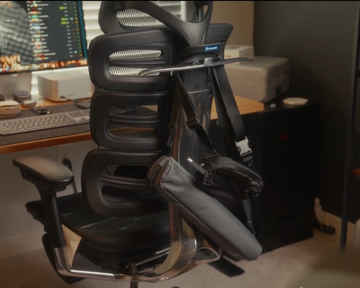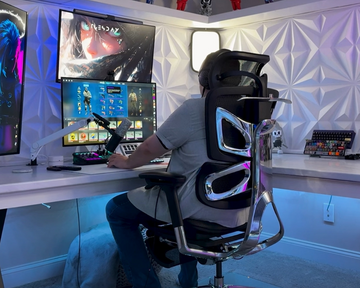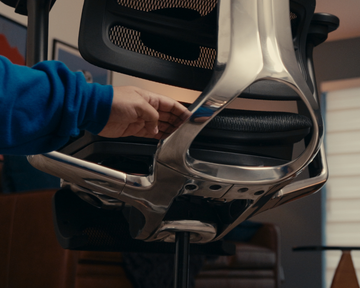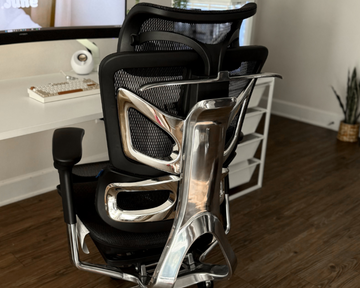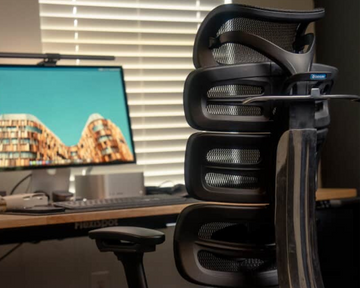When you're trying to focus on a project or engage in an important video call, the last thing you need is a squeaky office chair disrupting your concentration. A creaking chair can be annoying and distracting, not to mention a sign that your chair might need some maintenance. Fortunately, you don't always need to replace your chair to get rid of those irritating noises. In this guide, we'll walk you through how to stop creaking in an office chair, helping you create a more peaceful and productive workspace, whether you're using a budget task chair or a premium executive office chair.
Common Causes of Creaking in Office Chairs
Before you can learn how to stop a squeaky office chair, it's essential to understand what's causing the noise. Here are some of the most common sources of office chair creaking:
1. Loose Joints and Screws
Over time, the screws and bolts that hold your chair together can loosen, causing parts to rub against each other and create a creaking sound.
2. Worn-Out Casters
The wheels or casters on your chair can become worn or dirty, leading to friction and noise as you move around.
3. Lack of Lubrication
Moving parts like the swivel mechanism or the height adjustment lever need regular lubrication to operate smoothly. Without it, they can start to creak.
4. Damaged Upholstery or Padding
If the fabric or padding on your chair is torn or compressed, it can rub against the frame and create noise.
Things You'll Need to Fix a Squeaky Office Chair
To effectively stop creaking in office chairs, including high-end models like an office chair high back, you'll need a few basic tools and materials. Here's a list to get you started:
-
Screwdriver set (both Phillips and flathead)
-
Adjustable wrench
-
Lubricant spray (such as WD-40 or silicone-based lubricant)
-
Soft cloth or rag
-
Replacement casters (if needed)
-
Wood glue (if your chair has wooden parts that are creaking)
Having these items on hand will make the process of fixing your creaking chair much smoother and more efficient.
Step-by-Step Guide to Stop Creaking in Office Chair
Now that you know what's causing the creaking and have the necessary tools, let's dive into how to stop creaking in office chairs with these step-by-step instructions.
1. Tightening Loose Joints and Screws
If your office chair creaks from loose screws/bolts, here's how to fix it: Flip the chair upside down to access joints. Tighten any loose or sticking-out screws/bolts with a screwdriver/wrench, checking all connections (backrest, armrests, seat). Flip it back and sit to test if the creaking stops.
2. Lubricating Moving Parts
Another effective way to stop creaking is to lubricate moving parts. Start by identifying them, like the swivel mechanism and height adjustment lever. Then, spray lubricant into all connecting nooks and crannies. Next, move the chair in all directions to work the lubricant into joints. Finally, wipe off excess lubricant with a soft cloth to avoid attracting dust and dirt.
3. Replacing Worn-Out Casters
If your chair's noisy from worn/dirty casters, here's the quick fix: Use an adjustable wrench to twist off the old caster counterclockwise (force/lubricant if stuck). Clean the attachment spot with a cloth. Push the new caster into the hole until it clicks, twisting slightly to lock. Test by rolling the chair to check for smooth, quiet movement.
4. Fixing Damaged Upholstery or Padding
If a chair creaks from damaged upholstery/padding, do this: Check for tears, holes, or fabric rubbing the frame. Patch tears/holes with fabric adhesive, ensuring a secure fix. If padding's flat, fluff and redistribute it evenly by hand to cut friction and noise. Test by sitting and moving in the chair to see if the creaking stops.
When to Repair and When to Replace Your Office Chair
Knowing how to stop creaking in an office chair can save money and extend its lifespan. However, there are situations where replacement is the better choice:
1. Severe Damage
A broken frame or severely worn parts make repair unfeasible. Unsafe and uncomfortable, damaged chairs should be replaced.
2. Frequent Repairs
Constant fixes are costly and indicate the chair's lifespan is ending. Investing in a new one is more cost-effective.
3. Comfort Issues
Even without creaking, an uncomfortable chair needs upgrading. Choose one with ergonomic support and high-quality materials.
Best Office Chair Without Creaking
If you're facing any of the above issues, the OdinLake O2 (Ergo MAX 747) is a top-notch replacement. It's designed to solve common problems and boost comfort, durability, and user experience. Here are the reasons why the OdinLake O2 can be your optimal choice:
1. Robust Build
Made of high-quality, tough stuff, with a sturdy frame to endure daily use, minimizing future structural issues for a long-lasting seat.
2. Three-Section Backrest
Fits the spine's curve, offers superb support on long sits, reduces back stress, promotes good posture, and evenly spreads weight.
3. Silent Casters
The OdinLake ergonomic chair's thoughtfully designed casters glide effortlessly and quietly on any surface, providing an ultra-smooth, silent rolling experience.
4. Premium Components
Use top materials for longevity, reducing quick wear, cutting repair frequency, and saving time and money.
5. Adjustable Features
Besides the ergonomic backrest and adjustable armrests that ease shoulder and neck strain, the seat uses breathable FlexBreath Mesh. This premium Korean mesh stays comfortable and supportive for up to 15 years, blending style, comfort, and durability.
Tips to Prevent Future Creaking in Your Office Chair
Now that you know how to stop creaking in an office chair, here are some tips to help prevent it from happening again in the future:
1. Maintenance
Make it a habit to check your chair regularly for loose screws, worn-out parts, and other signs of wear and tear. Tighten any loose screws and lubricate moving parts as needed.
2. Clean Your Chair
Use a soft cloth to clean your chair regularly, removing dust and dirt that can cause friction and noise.
3. Avoid Overloading
Don't exceed the weight limit of your chair. Overloading it can cause parts to wear out faster and lead to creaking.
4. Use a Chair Mat
If you have a hard floor, use a chair mat to protect both your floor and your chair's casters. This can help reduce friction and noise.
5. Invest in Quality
When purchasing a new chair, choose one that is made from high-quality materials and has a good reputation for durability. A well-made chair will last longer and be less likely to develop creaking issues. For the best long-term value and comfort, consider investing in an ergonomic desk with chair set that promotes proper posture and minimizes wear over time.
FAQs:
1. Can I use any type of lubricant to stop creaking in my office chair?
It's best to use a lubricant designed for furniture or mechanical parts, like WD-40 or silicone-based ones. Avoid oil-based lubricants as they attract dust and dirt.
2. How often should I lubricate my office chair to prevent creaking?
Lubricate moving parts every few months, or more often if used frequently, to prevent creaking.
3. My office chair still creaks after I've tightened all the screws and lubricated the parts. What should I do?
If creaking persists after tightening screws and lubricating, check for worn casters or damaged upholstery. Follow the guide to fix them or replace the chair if damage is severe.
4. Can I stop creaking in office chairs if it's an old, vintage model?
Yes, creaking in old or vintage office chairs can be fixed. Be cautious when tightening screws and lubricating parts, as they may be delicate. If unsure, seek professional repair.
5. Is it worth repairing a cheap office chair that's creaking?
It depends on the extent of the damage and the repair cost. Minor, inexpensive repairs may justify fixing a cheap chair, but severe damage or frequent repairs make buying a new, high-quality chair more cost-effective.
Conclusion
Learning how to stop creaking in an office chair is a simple yet effective way to improve your workspace and boost your productivity. By following the steps outlined in this guide, you can identify the cause of the creaking, gather the necessary tools and materials, and fix the issue yourself. Whether it's tightening loose screws, lubricating moving parts, or replacing worn-out casters, these solutions can help you create a quieter, more comfortable workspace. And if your chair is beyond repair, consider investing in a new, high-quality chair like the OdinLake that will provide you with years of comfortable use. With it, you'll be able to enjoy a creak-free office chair and a more peaceful work environment.
Read more:
Best Office Chairs for 8-Hour Workdays
Best Ergonomic Chairs for Neck Pain in 2025: Comfort & Support Guide

